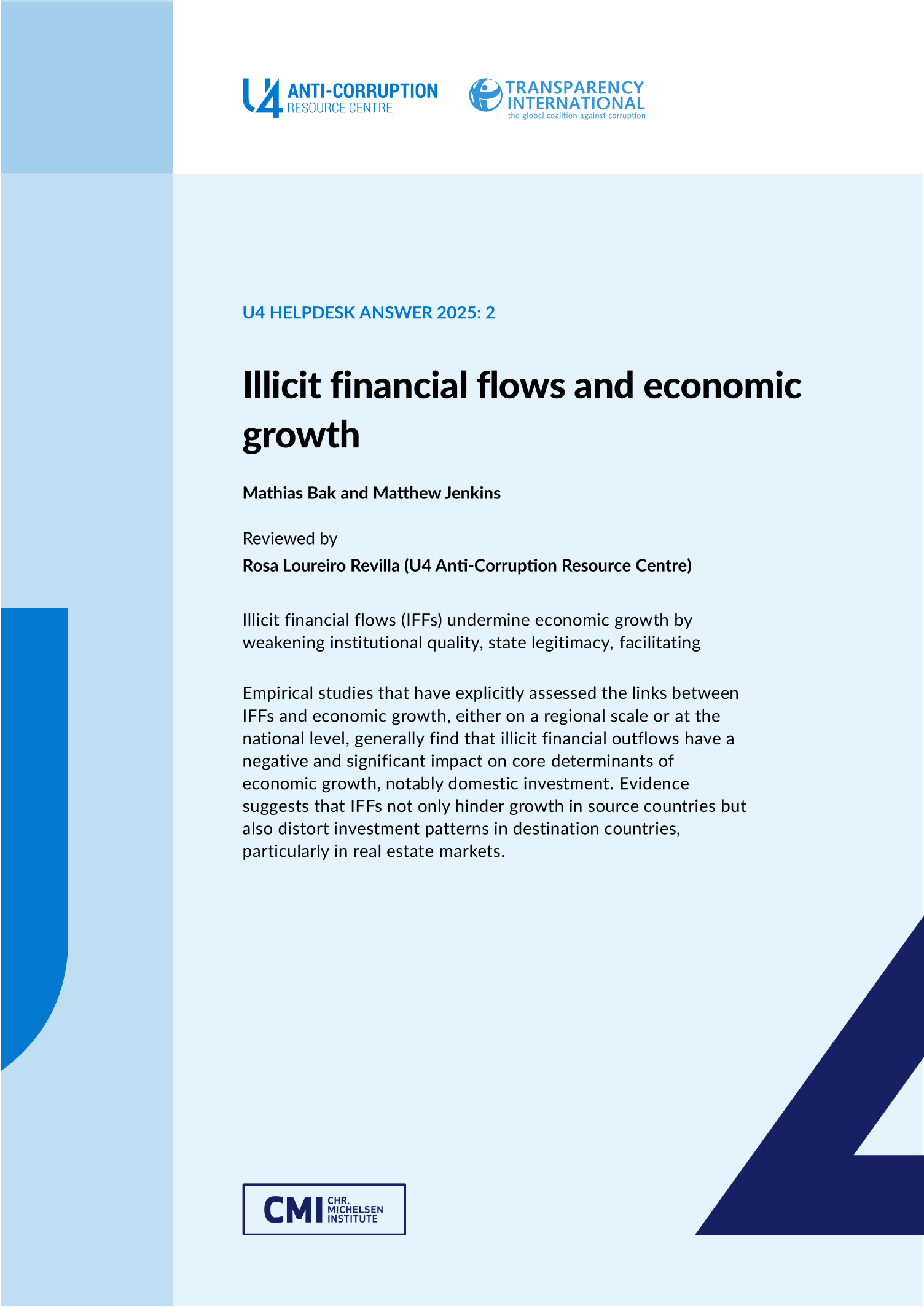Main points
- There is significant variation in how IFFs are defined and, as a result, measured. These conceptual and methodological differences have important implications for estimates of the scale of IFFs and attempts to analyse their effects on economic growth.
- Using time-series panel data (data that tracks multiple entities, like countries or companies, over a period of time) to assess the impact of the estimated volume of illicit outflows on GDP growth and domestic investment is the most common method to evaluate how IFFs relate to economic performance. Despite well-documented methodological shortcomings (Nitsch 2016; Johannesen and Pirttilä 2016; Collin 2020: 55), Global Financial Integrity’s estimates of IFFs are widely used to model the economic impact of illicit flows.
- The structural impact of IFFs in macroeconomic terms is a growing field of study, and the majority of studies examine the consequences of IFF outflows on source countries (also known as origin countries).
- This literature review reveals an emerging consensus that illicit outflows damage economic growth, productivity and socio-economic development in source countries. There are three major reasons for this: illicit financial outflows have significant negative effects on domestic revenue mobilisation, reduce private capital accumulation and discourage private and public investment.
- In turn, this hinders structural transformation and reduces public spending on critical sectors like education and healthcare, all of which can have knock-on effects on economic growth.
- Studies that have applied so-called financing gap models, such as the incremental capital output ratio (ICOR), to estimate the potential opportunity cost of illicit financial outflows conclude that these lost funds could have contributed significantly to higher economic growth in IFF source countries (Almounsor 2017; Fisseha 2022; Mpenya et al. 2015; Ndikumana 2014).
- IFFs’ effects on economic growth are more significant in the long run than in the short term, pointing to the negative cumulative effect of illicit financial outflows over time (Kasongo 2022: 1; Effiom et al. 2020: 358).
- Significantly less work has been conducted on the economic effects of IFFs on transit and destination countries. Nevertheless, some empirical studies indicate that illicit financial inflows can lead to inefficient investment patterns and asset inflation (particularly in real estate).
- Evidence suggests that quality of governance and control of corruption matters to counter IFFs and to mitigate their potential negative effects. Economic damage from IFFs appears less severe in situations with strong institutions and governance frameworks.



